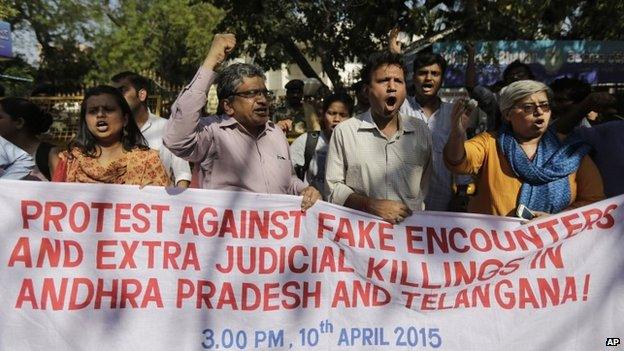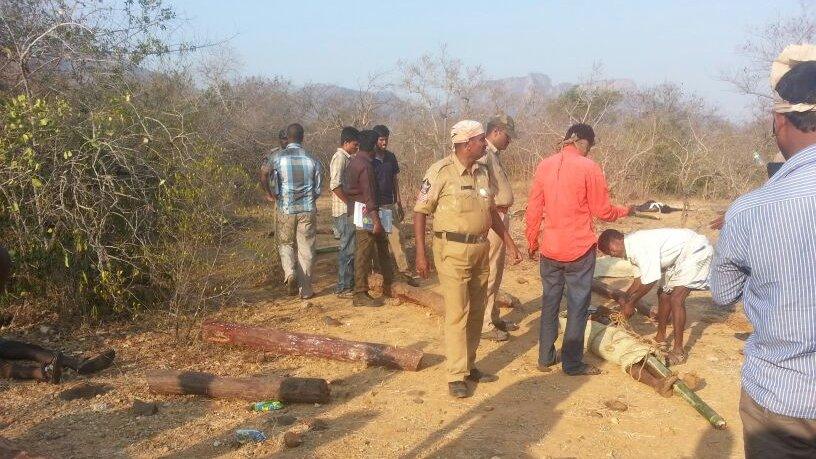Why India's 'fake encounters' are shockingly common
- Published

There have been protests against 'fake encounters' in India
Red sandalwood is a beautiful wood. The best specimens are almost crimson with a rich grain. It is highly prized for furniture in the Far East.
But in India they are now calling it "blood wood".
That's because last week 20 suspected smugglers of this exotic timber were killed in a shoot-out with police.
Red sandalwood is incredibly rare. It only grows in a few forests in south India. It is illegal to cut the trees or sell the wood and as a result "red sanders", as it is called in India, can be worth tens of thousands of pounds a ton.
The high price has fostered a rampant illicit trade in the stuff.
According to the official story, a police task force set up to tackle red sandalwood smuggling confronted a gang of more than 100 men deep in remote forests of Andhra Pradesh in the south of India.
They say the alleged smugglers responded with a hail of stones.
The police officers fired on them "in self defence", according to Andhra Pradesh police chief JV Ramudu.
Within hours journalists, opposition politicians and human rights groups including Amnesty International, had begun to question that account.
Why were so many of the dead shot in the head or torso and some in the back? Why did it appear the bodies had been moved? Why were the dead in two groups in different locations?
One local man claimed some of the dead men hadn't been in the forest at all, he said he's seen them taken off a bus by police officers.
Soon people were claiming the deaths had all the hallmarks of what, here in India, is called an "encounter killing", which the police routinely deny.
Any Indian will know what an "encounter" or "fake encounter" is: they are staged confrontations which almost invariably end with dead criminals and unscathed police.
And allegations of fake encounters are shockingly common.
Another shared India's front pages with the "blood wood" story this week.
In this one five prisoners charged with murdering two policemen were gunned down , externalas they were being transported to a court in southern Indian city of Hyderabad.
The police say one of the prisoners attempted to snatch a rifle and the armed officers who were guarding them fired in self-defence.
Relatives of the accused, meanwhile, told reporters they believe the incident was "stage managed", external and have demanded the police involved are charged with murder.
The Financial Times journalist Edward Luce explores the encounter phenomenon in his excellent book on modern India, In Spite of the Gods.
He describes meeting one police officer in Mumbai who claimed to have been involved in "about 50" encounters. Small beer. He told Luce of another officer who had been involved in 80 such killings.
Encounters are - at least in part - a response to India's grindingly slow and dysfunctional criminal justice system.
The police often see cases evaporate as trials are delayed and witnesses turn hostile. Defendants are also known to buy their freedom.
But the response - taking the law into their own hands - reflects something even more sinister: a culture in which some police officers assume that they can kill with impunity, safe in the knowledge that they are very unlikely to face any consequences.
- Published8 April 2015

- Published8 April 2015
